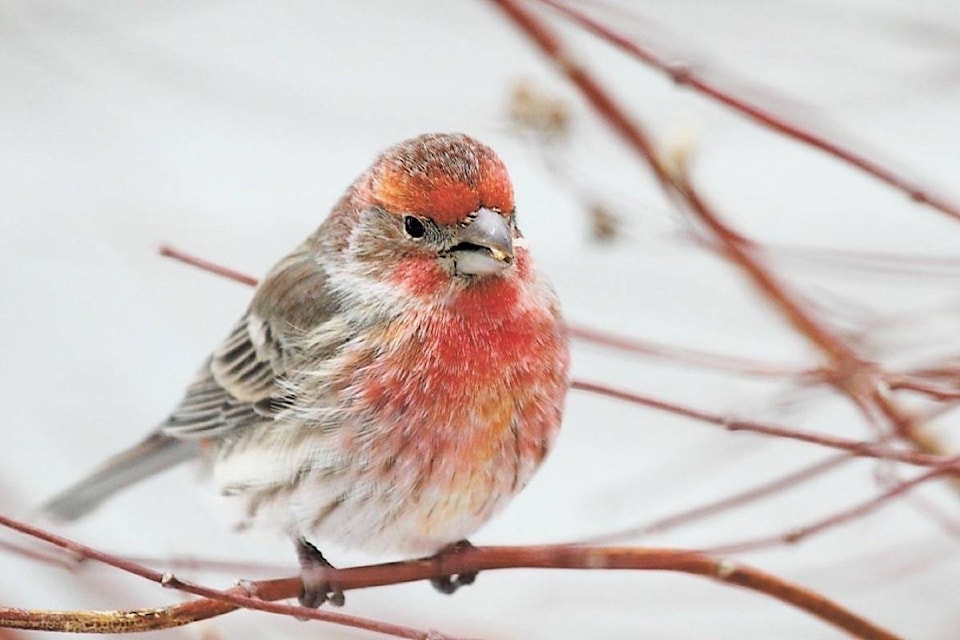Amateur ornithologists, your annual challenge is just around the corner.
As Christmas approaches, another annual ritual is set to take place throughout the Western Hemisphere with the 118th edition of the annual Christmas Bird Count.
Between Dec. 14 and Jan. 5, tens of thousands of bird and winter enthusiasts will rally together to count millions of birds across the continent as part of the 118th year of this long-running wildlife survey.
Each year, Bird Studies Canada and the National Audubon Society help coordinate and support the efforts of more than 2,500 counts throughout the Western Hemisphere. Christmas Bird Counts are run across Canada and the United States, as well as in Latin America, the Caribbean, and some Pacific Islands.
Locally, the region’s bird count will be held on Dec. 16.
The Trail region covers all the way from Walmart in Waneta to Tadanac; Warfield also includes Rivervale; Beaver Valley covers much of Area A.
If you want to take part, the first step is to contact a coordinator in your region.
Arnold By (250-368-3068) coordinates the Rivervale-Warfield area and compiles the numbers for the region. Shirley Coffin (250-364-0339) covers Trail, Don McNeill (250-367-6528) covers Beaver Valley and Linda Szymkowiak covers the Rossland area.
“I welcome anyone who wants to participate,” said Szymkowiak. “It’s anytime from dawn to dusk.
“If they note the species and count the number of that species. If they’re doing it at their feeder, then it is the greatest number of the species seen at one time. You don’t keep adding on.
“If you’re going for a walk, of course, it would be a cumulative because they are moving out of the area.
“If they are going for a walk, we need to know the area they walked, the distance and the amount of time they put in.”
By added it’s important to contact one of the coordinators so they can map out areas for counting.
“We don’t want double counts,” said By. “Those people would direct you to a place where nobody is counting.”
He added it’s important to have a handbook for bird watching to help identify the species.
As for the time commitment required for counting, that depends on a few factors, he said.
“It depends on the area and your enthusiasm,” said By.
“If it’s at a feeder, maybe an hour, but if you’re doing some walking it can take you longer. Again it depends on the enthusiasm of the people involved and how knowledgeable they are.”
Coffin said she’s always happy to get more volunteers and, if contacted, can help ensure there aren’t people doing the count in the same location. She added for those that can’t get out, they can do it from their own homes.
“They can also do a bird count at their feeders,” she added. “Then call me with the count.”
By acknowledged that people are more enthusiastic about the bird count in rural areas as opposed to the city.
“We have more trouble getting people in the cities, even in Warfield.”
Data collected during the counts include details on the number of birds of each species seen or heard within a local 24-km diameter circle. Surveying this circle year-after-year contributes valuable long-term information on how winter birds are faring, both in your locale and across the country.
Novice or experienced, the Christmas Bird Count is for everyone. Whether you like exploring forests, fields, and waters in search of lingering migrants, or prefer counting feeder birds from your window with a warm mug in hand, the Christmas Bird Count offers diverse opportunities for participation.
No matter how you contribute, all Christmas Bird Count observations are used to study the health of winter bird populations over time and guide conservation strategies to help birds and their habitats.
“Every Christmas Bird Count participant is an important part of this valuable project for birds,” says Liz Purves, Bird Studies Canada’s Christmas Bird Count Coordinator.
“Whether you participate for bird conservation, for some friendly birding competition, or for an excuse to get outside in the winter, your efforts are meaningful for birds.”
The skills and dedication of thousands of volunteer Citizen Scientists harnessed during the Christmas Bird Count achieve incredible results that professional scientists and wildlife biologists could never accomplish alone.
During last year’s count in Canada, over 3 million birds of 278 species were counted by 14,000 participants in 447 counts across the country. Counts were conducted across diverse habitat types in each of Canada’s provinces and territories – from coast to coast to coast!
The Christmas Bird Count took root over a century ago when 27 birders in 25 localities from Toronto, Ontario to Pacific Grove, California, led by ornithologist Frank Chapman, proposed a conservation-oriented alternative to the traditional ‘side hunt,’ a Christmas Day competition to hunt the most birds and small mammals.
This alternative initiative to identify, count, and record all the birds founded on Christmas Day 1900 has turned into one of North America’s longest-running wildlife monitoring programs.
For more information about the Christmas Bird Count, or to find the location of additional counts, visit Bird Studies Canada’s website at www.birdscanada.org/volunteer/cbc.
With files from Black Press
